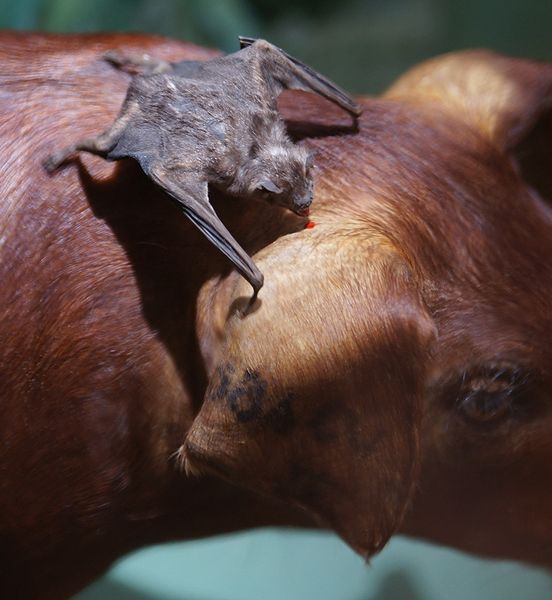As reported on our web site’s Earth Gate page, “the first documented fatality in the United States from rabies linked to a vampire bat attack was revealed by the Centers for Disease Control and Prevention on August 12. The victim was a 19-year-old migrant worker who was bitten on the heel in his native Mexican state of Michoacán last summer. In the CDC’s Morbidity and Mortality weekly report, it said the man was later hospitalized after falling ill while working at a sugar cane plantation in Louisiana. ‘During the next several days, the patient became gradually less responsive to external stimuli, developed fixed and dilated pupils, and began having episodes of bradycardia (slow heartbeat) and hypothermia,’ the CDC said. The young man died shortly after his family ordered him taken off life support.
While the range of the vampire bats is currently limited to Latin America, the CDC warned that it might be expanding toward the United States due to climate change. This ‘likely would lead to increased bat exposures to both humans and animals (including domestic livestock and wildlife species) and substantially alter rabies virus dynamics and ecology in the southern United States,’ the CDC warns. The strain of rabies that killed the young man is especially virulent, with an incubation period of just 15 days, compared to the median 85 days in other U.S. cases of human rabies.”
“Unlike fruit-eating bats, the vampire bat has a short, conical muzzle. It also lacks a nose leaf, instead having naked pads with U-shaped grooves at the tip. The common vampire bat also has specialized thermoreceptors on its nose, which aids the animal in locating areas where the blood flows close to the skin of its prey. A nucleus has been found in the brain of vampire bats that has a similar position and similar histology to the infrared receptor of infrared-sensing snakes. Vampire bats use infrared radiation to locate blood hotspots on their prey, according to a study published in Nature. The infrared signals are received through the bat’s three 1mm-diameter leaf pits, which are located around their noses and can change direction when needed. The only other vertebrates capable of detecting infrared radiation are boas, pythons, and pit vipers, all of which have pit organs” (source).
“Vampire bats are believed to be the only species of bats in the world to ‘adopt’ another young bat if something happens to the bat’s mother. Vampire bats also share a strong family bond with members of the colony, which is believed to be why they are the only bats to take up this adoption characteristic. Another unique adaptation of vampire bats is the sharing of food. A vampire bat can only survive about two days without a meal of blood, yet they cannot be guaranteed of finding food every night. This poses a problem, so when a bat fails to find food it will often ‘beg’ another bat for food. The ‘host’ bat may regurgitate a small amount of blood to sustain the other member of the colony. This has been noted by many naturalists as an example of reciprocal altruism in nature. Vampire bats also engage in social grooming. It usually occurs between females and their offspring, but it is also significant between adult females. Social grooming is mostly associated with food sharing” (Ibid.).
In an editorial note, the CDC’s Morbidity and Mortality weekly report states: “In addition to rabies and other lyssaviruses, accumulating evidence implicates bats as reservoirs and potential vectors of a number of emerging infectious diseases. These discoveries raise further questions about the health risks to human populations with direct or indirect contact with bats, particularly given the high disease severity and fatality rates associated with these zoonoses. Further research should be directed toward better defining the nature and magnitude of the risks to human health posed by bats. To mitigate the known risk for rabies, public education should increase awareness of the risk for rabies transmitted from bats and encourage avoidance of contact with bats and wildlife in general.”
Article by Bill Norrington




